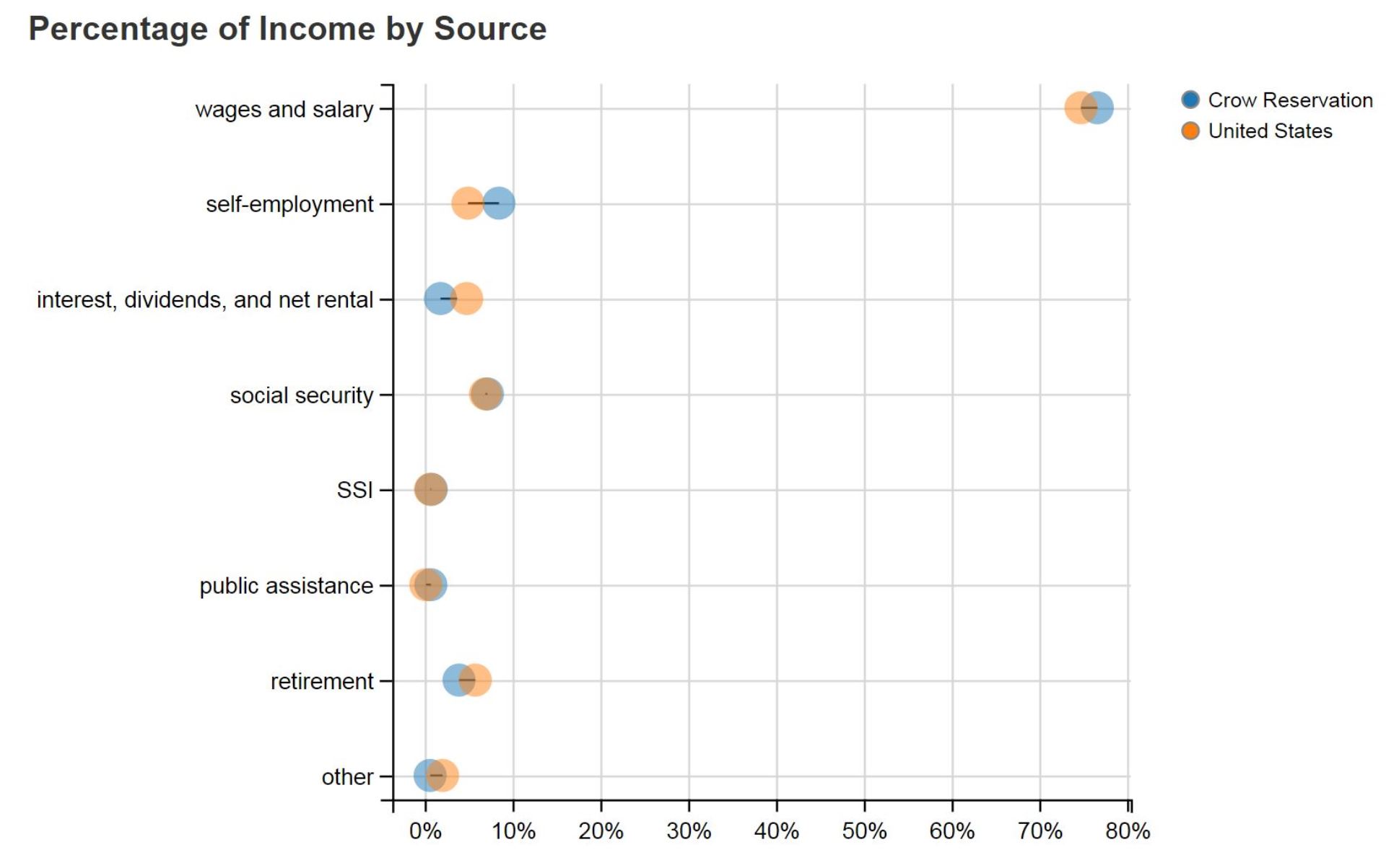Basic demographic data on many American Indian reservations is just a click away on our Center for Indian Country Development Reservation Profiles page. The Center’s profiles cover 77 federally recognized reservations with populations of at least 2,500, a threshold that helps ensure greater statistical accuracy. The profiles currently feature statistics computed from the U.S. Census Bureau’s American Community Survey (ACS) for 2010–2014. Although the accuracy of ACS data on reservations has been questioned (see the example discussed here), ACS figures nonetheless serve as important benchmarks of population levels and socioeconomic conditions that are widely used by planners, business owners, and policymakers.
As an example of information available in the profiles, I will briefly examine statistics on the sources of money income1 on the Crow Reservation in Montana. The first figure below shows a large gap: wage and salary income per Crow Reservation resident is just over $10,000, as compared to the national average of over $20,000 per person. Additional but smaller dollar deficits appear in other employment-related categories, such as income from Social Security or retirement plans, and also in investment income (interest, dividends, and rent). Income from self-employment and other sources, though not large, is roughly on par with national averages.
The second figure shows each source as a percentage of total money income. Despite the big dollar gap in wage and salary income, the share of these earnings in total money income is nearly the same on the Crow Reservation as in the U.S. overall, or about 75 percent. Income shares from most other sources on the Crow Reservation also are about on par with national averages. The largest of the relatively small differences in shares are for interest-dividends-rent (lower on the reservation) and self-employment income (higher on the reservation).
Using the Center’s profiles to compare income shares by source for the other reservations, you will see a range of results for self-employment income. For example, the share of self-employment income reaches double-digit percentages on about a dozen Great Plains reservations, which may reflect a relatively limited number of employment options there (as indicated by a below-average share of wage and salary income). You also will find shares well under 1 percent, such as on the Choctaw Reservation, which is noted for its strong industrial base and thus high wage and salary income share. The share of self-employment income exceeds the U.S. average of 4.9 percent in about half of the Center’s reservation profiles. Averaged across the 77 reservations profiled, the share of self-employment income is almost a percentage point higher, at 5.8 percent.
In short, on average reservation residents are relatively active as entrepreneurs, at least judging by the importance of self-employment income in our reservation profiles.
We encourage you to visit our Reservation Profiles to check reservation income shares and other statistics. We will maintain and add additional data to these profiles in the future and we welcome feedback on how they are being used and can be made more useful. Comments can be sent to cicd@mpls.frb.org.
Endnotes
1 The Census Bureau explains money income as “income received on a regular basis (exclusive of certain money receipts such as capital gains) before payments for personal income taxes, social security, union dues, Medicare deductions, etc. Therefore, money income does not reflect the fact that some families receive part of their income in the form of noncash benefits, such as food stamps, health benefits, subsidized housing, and goods produced and consumed on the farm. In addition, money income does not reflect the fact that noncash benefits are also received by some nonfarm residents which may take the form of the use of business transportation and facilities, full or partial payments by business for retirement programs, medical and educational expenses, etc.” Read more here.







